Music Library Association
Basic Manual Series
Jean Morrow, Series Editor
1. Music Classification Systems, by Mark McKnight, edited by Linda Barnhart, 2002.
2. Binding and Care of Printed Music, by Alice Carli, 2003.
3. Music Library Instruction, by Gregg S. Geary, Laura M. Snyder, and Kathleen A. Abromeit, edited by Deborah Campana, 2004.
4. Library Acquisition of Music, by R. Michael Fling, edited by Peter Munstedt, 2004.
5. Audio and Video Equipment Basics for Libraries, by Jim Farrington, 2006.
6. A Manual for the Performance Library, by Russ Girsberger, 2006.
A Manual for the
Performance Library
Russ Girsberger
MLA Basic Manual Series, No. 6

SCARECROW PRESS, INC.
Published in the United States of America
by Scarecrow Press, Inc.
A wholly owned subsidiary of
The Rowman & Littlefield Publishing Group, Inc.
4501 Forbes Boulevard, Suite 200, Lanham, Maryland 20706
www.scarecrowpress.com
Estover Road
Plymouth PL6 7PY
United Kingdom
Copyright 2006 by Russ Girsberger
All rights reserved. No part of this publication may be reproduced, stored in a retrieval system, or transmitted in any form or by any means, electronic, mechanical, photocopying, recording, or otherwise, without the prior permission of the publisher.
British Library Cataloguing in Publication Information Available
Library of Congress Cataloging-in-Publication Data
Girsberger, Russ.
A manual for the performance library / Russ Girsberger.
p. cm. (MLA Basic Manual Series ; no. 6)
Includes bibliographical references and index.
ISBN-13: 978-0-8108-5871-8 (pbk. : alk. paper)
ISBN-10: 0-8108-5871-1 (pbk. : alk. paper)
1. Music librarianship. I. Title.
ML111.G57 2006
026'.78dc22
2006018542
 The paper used in this publication meets the minimum requirements of American National Standard for Information SciencesPermanence of Paper for Printed Library Materials, ANSI/NISO Z39.48-1992.
The paper used in this publication meets the minimum requirements of American National Standard for Information SciencesPermanence of Paper for Printed Library Materials, ANSI/NISO Z39.48-1992.
Manufactured in the United States of America.
CONTENTS
ACKNOWLEDGMENTS
My sincere thanks go to my colleagues and friends who read this manuscript. Their insightful comments made this manual more valuable and practical. Special recognition goes to:
Marcia Farabee of the National Symphony Orchestra
Kazue McGregor of the Los Angeles Philharmonic
Clint Nieweg of the Philadelphia Orchestra (retired)
Mike Ressler and Jane Cross of the United States Marine Band
Clovis Lark of Indiana University
Jennifer Hunt of The Boston Conservatory
The members of the Major Orchestra Librarians Association
Thanks also to my special advisors, Susan Koutsky, Ella Winfield, Stu Serio, Ellen Miller, Courtney Secoy, and to my colleagues at the New England Conservatory, Sally Millar, Pat Maxfield, and Jean Morrow.
Experience is the best teacher and I was fortunate to learn from the outstanding librarians of the United States Marine Band (Washington, D.C.) and Marty Burlingame and John Perkel of the Boston Symphony Orchestra.
This book is dedicated to my wife Shawn and my children, Richie and Jasmine.
INTRODUCTION
The performance library is the repository and distribution center for music scores and parts used by performing musicians and ensembles. Such libraries support many types of musical groups, including symphony orchestras, opera companies, ballet companies, wind ensembles and bands, choruses, chamber ensembles, and jazz and popular music combos.
The purpose of this manual is to assist librarians, musicians, volunteers, and students in operating a performance library for their organization or institution. It will outline the basic principles and practices for acquiring, processing, preparing, and distributing music to performers. It will also recommend procedures for the organization, cataloging, care, and preservation of the librarys holdings.
We hope that this book will be a helpful resource to the performance librarian supporting any type of academic, community, or professional ensemble.
CHAPTER 1
What Is a Performance Librarian?
Performance librarians manage the music collections and distribute the music scores and parts used by individuals and ensembles in performance. They work in concert with performers, conductors, and administrators to present successful performances. They are the linchpin in the concert production process, coordinating with administrators to provide the tools for the performers who share their talents with the audience.
Performance librarians are first and foremost musicians. It is their primary responsibility to prepare and provide quality music in a timely and efficient manner. In this context, quality music refers not to the aesthetics of the piece, but to the condition of the music, its suitability for the performer, and the accuracy of the musical information it contains.
Performance libraries and librarians are found in professional music ensembles as well as semiprofessional, educational, and community groups. The duties and responsibilities of these librarians can vary according to the ensembles they serve. While professional ensembles may support a full-time library staff, smaller groups often assign these responsibilities to players in the ensemble, to volunteers, or to students, yet the basic functions and goals of the job remain the same.
EDUCATION AND TRAINING FOR THE PROFESSION
At the time of this writing, there is no academic course of study to train for a career as a performance librarian. The traditional library science degree is not a job requirement and does not address many of the unique skills and responsibilities of a performance librarian. Professionals in the field have diverse backgrounds, usually with experience as performers in large ensembles, which helps them understand the needs of their patrons. The best education for this type of work is through an internship program or through experience working in a professional performing ensemble library.
Professional performance librarians are knowledgeable about music theory, music history, performance practice, and repertoire. These subjects should be studied in relation to the repertoire in the library, be it orchestral, choral, band, or jazz and popular music.
The librarian should learn basic information about instrumentation and orchestration, particularly the keys, ranges, and transpositions of instruments. It is not unusual to be asked to rewrite a baritone saxophone part for the bass clarinet player, or some similar reorchestration. This knowledge is also helpful in score reading.
Related to orchestration is a thorough knowledge of music notation. Computer notation programs are commonplace and familiarity with one or more is helpful, but the ability to write hand manuscript legibly is a basic skill. While the software programs will place the music on the page for you, they are not foolproof. The librarian should know the principles of notation, page layout, and what makes a part readable to a player. A list of recommended notation manuals is given in the bibliography.
Finally, the performance librarian should be familiar with the terminology and musical instructions that appear in the parts and score. This includes the names of the instruments in foreign languages, as well as the instructions unique to strings (bowing techniques, divisi directions), woodwinds and brass (mutes, doubling directions), percussion instruments, vocal and choral music, and jazz-playing techniques.
Next page



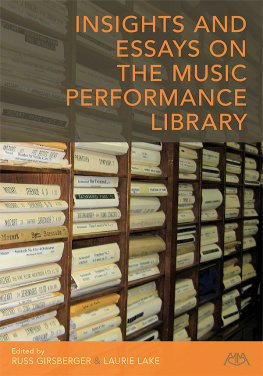
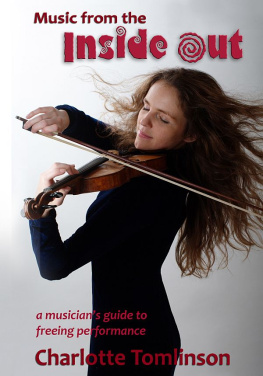
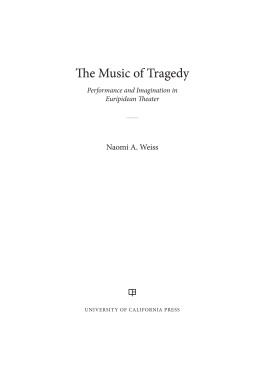
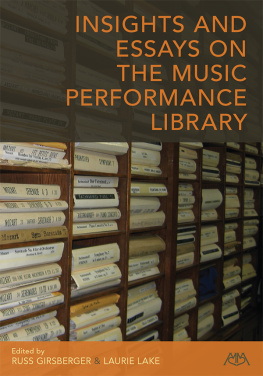
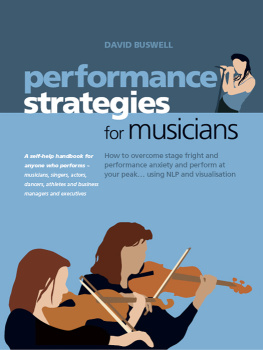

 The paper used in this publication meets the minimum requirements of American National Standard for Information SciencesPermanence of Paper for Printed Library Materials, ANSI/NISO Z39.48-1992.
The paper used in this publication meets the minimum requirements of American National Standard for Information SciencesPermanence of Paper for Printed Library Materials, ANSI/NISO Z39.48-1992.